corne
with the unavailability of the Chimera Ergo 42 the past several months, i came across the Corne keyboard in the hunt to build another keyboard.
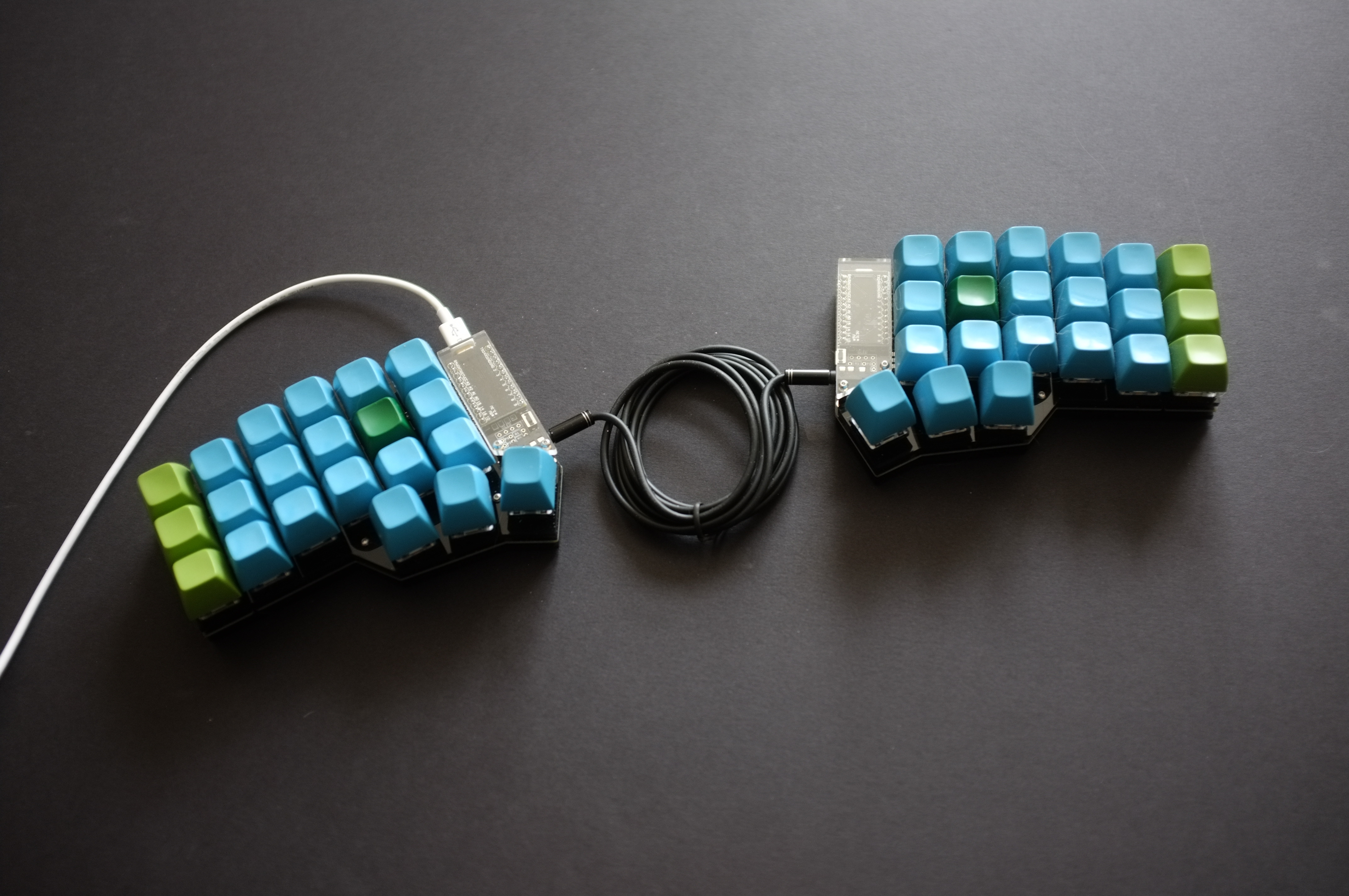
While not wireless, it is another 42 key 40% keyboard which could be flashed with the Chimera BEAKL Zi layout without much effort—replacing only the hardware specific initialization logic in the keymap.c source (which took all of a minute to review and do).
in use
the column stagger of the keys is not as pronounced as the Ergo 42, with the outer pinkie keys having none at all. But the thumb keys are subtly arced compared to the staggered horizontal displacement of the Chimera. Six of one, half dozen of another, as they say.
In use, finger positioning is familiar, feeling a touch tighter with its more subtle finger staggering—not necessarily a negative thing, just different. The arced thumb keys feel better oriented, with the alignment of the sculpted SA keycaps to the thumb. It’s all about feel!
gateron yellows
this build is with linear Gateron Yellow keyswitches, not the usual linear Cherry Silent Reds i have been using lately (part of my distraction free obsession). They are a slightly heavier switch—with a 50g activation point versus 45g—with a noticeably different force curve from other linear switches in the family. And a quite appealing resultant feel. They don’t have the dampened stroke of the Cherry Silent Reds but that is also part of their contrasting charm. A change of pace. i may need to build a few more boards with this switch.
The slightly heavier activation point does facilitate a non-bottoming out keypress with a bit of practice, mitigating the keyboard sound. Good practice. These switches are growing on me much faster than i expected.
design
there are many case options available from suppliers for every taste—even some exotic group buy options with tenting have been available. i happen to like the simple acrylic laser cut PCB sandwich (top plate and base) for its clean low profile minimalist look.
i forewent the usual distinguishing extended features that appeal to many builders of this keyboard—LEDs and OLED display. LEDs are not unique to this DIY keyboard and don’t hold any appeal for me. A distraction free writing disposition. The OLED? Maybe i’ll find a debug usage for the readout just for the fun of it (and programming exercise). It is added easily enough..
The power lies in what can be done under the hood with the QMK firmware, in this case, optimizing home row and thumb cluster efficiency. Three thumb keys is arguably the optimal maximum—with a central at rest position and adjacent keys to either side. For a 40% keyboard, layers is the key to achieving accessibility with minimum finger travel. Optimized layouts such as the BEAKL variant here, do your fingers an even greater favour. But that is another conversation.
i could even live quite happily with the outer extended pinkie columns removed for a 36 key keyboard—and would if a case were available. They could easily be sacrificed with no detriment to this layout.
layers
as happens whenever a new keyboard is added to my rotation, the specialty layers, in particular, get revisited for their utility in my particular workflow. This time around the number layer finds minor changes (to be propagated to the Chimera, Planck and Splitography keyboards).
Consolidating all the previous updates, we now have for BEAKL Zi..

base layer
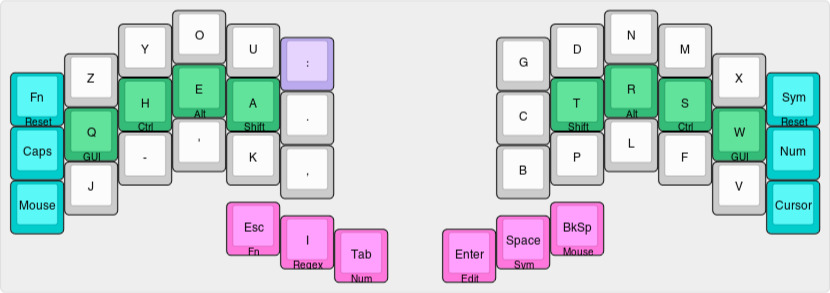
home row shift
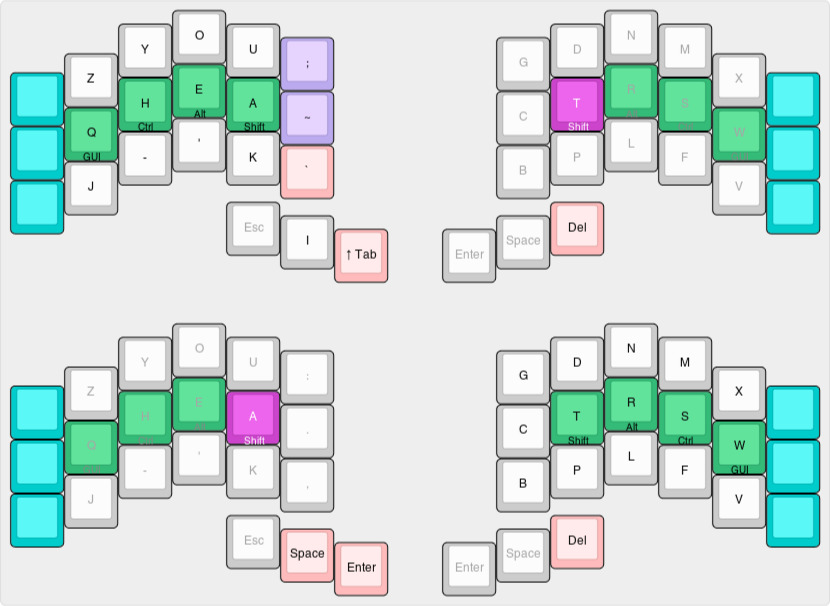
leader capitalization chords
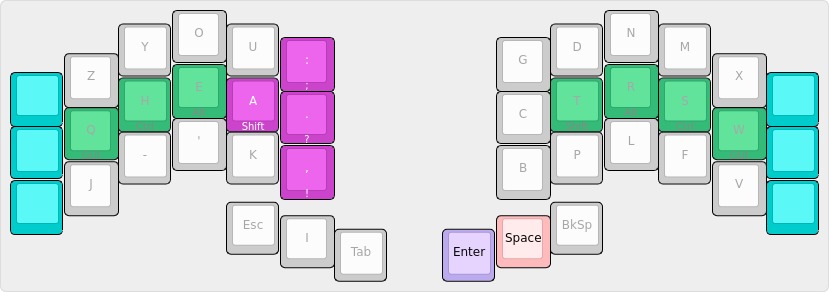
regex symbol layers
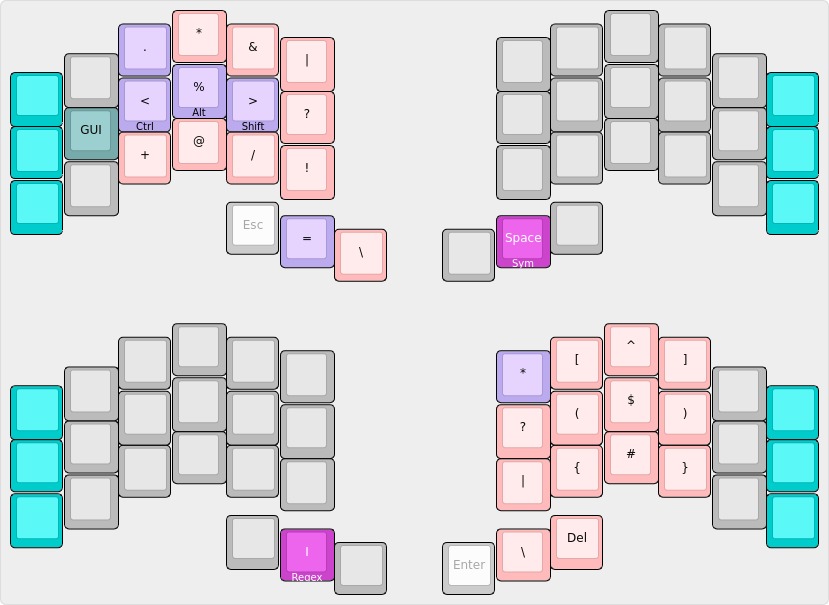
number fnkey layers
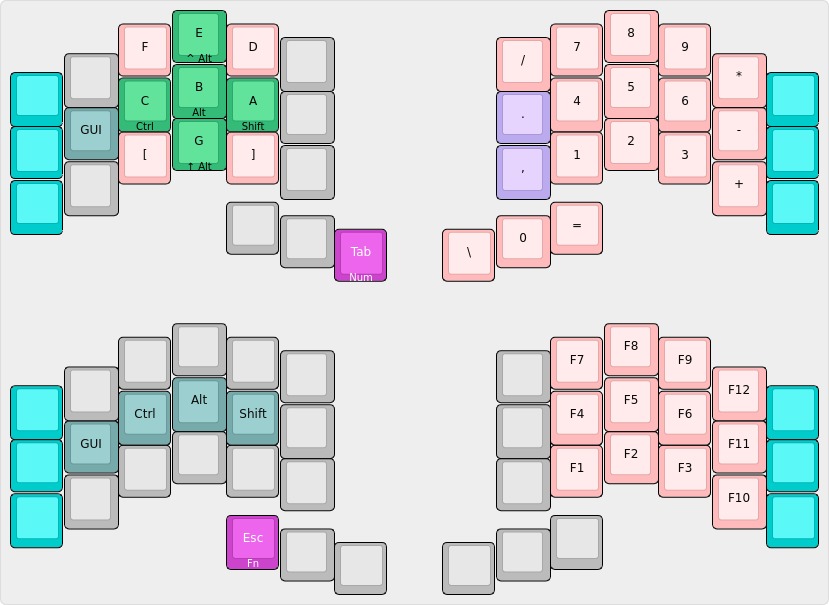
chords navigation layer
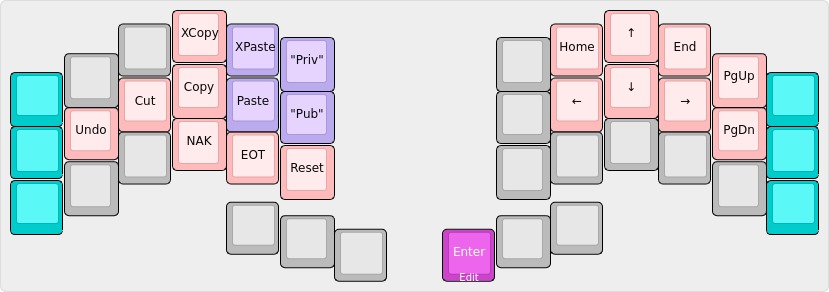
mouse layer
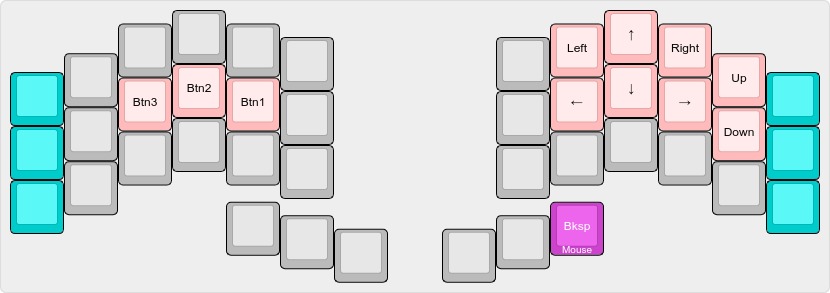
Refer to the numerous BEAKL write-ups for in-depth descriptions and explanations of the chords and multi-tap keys.